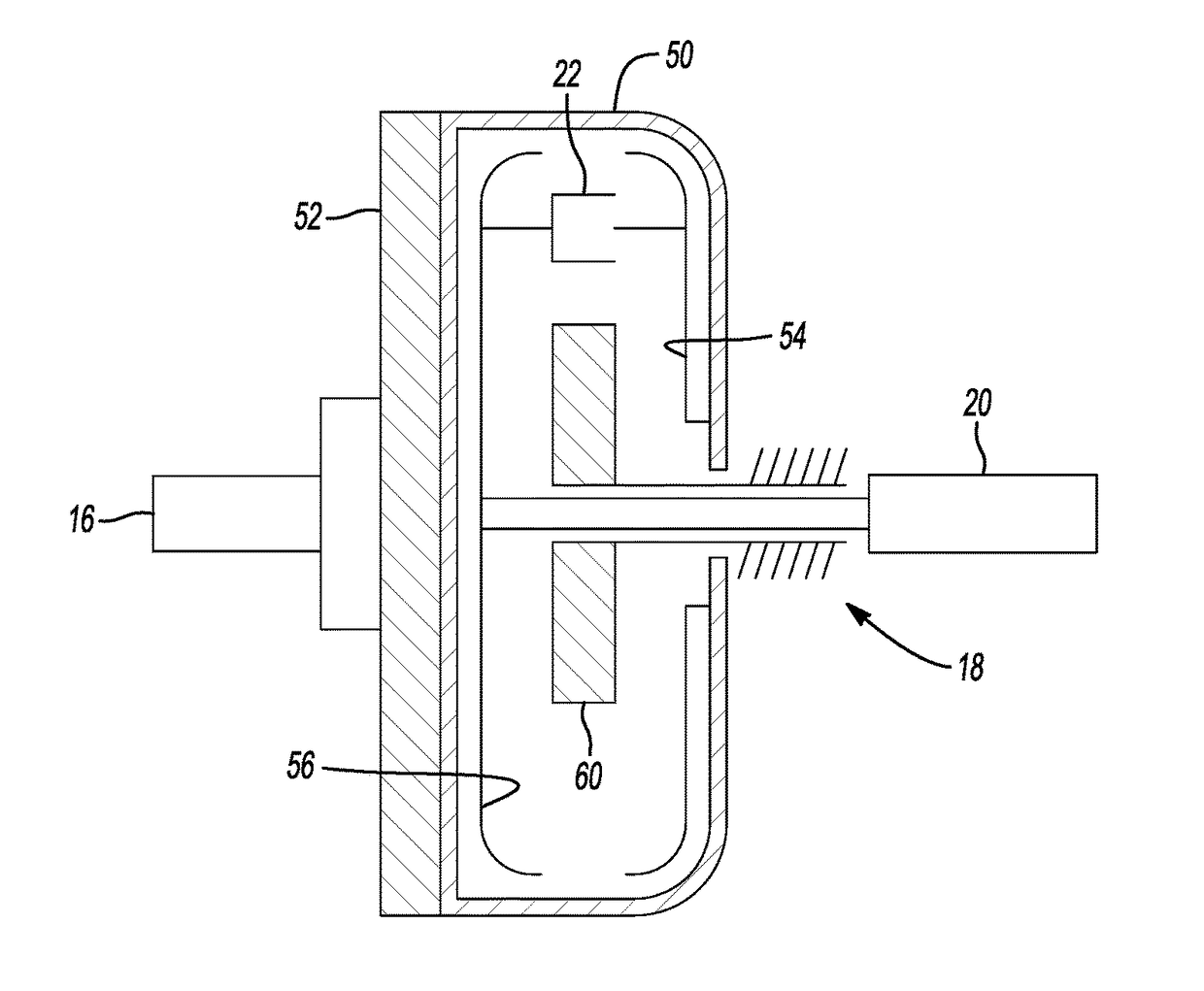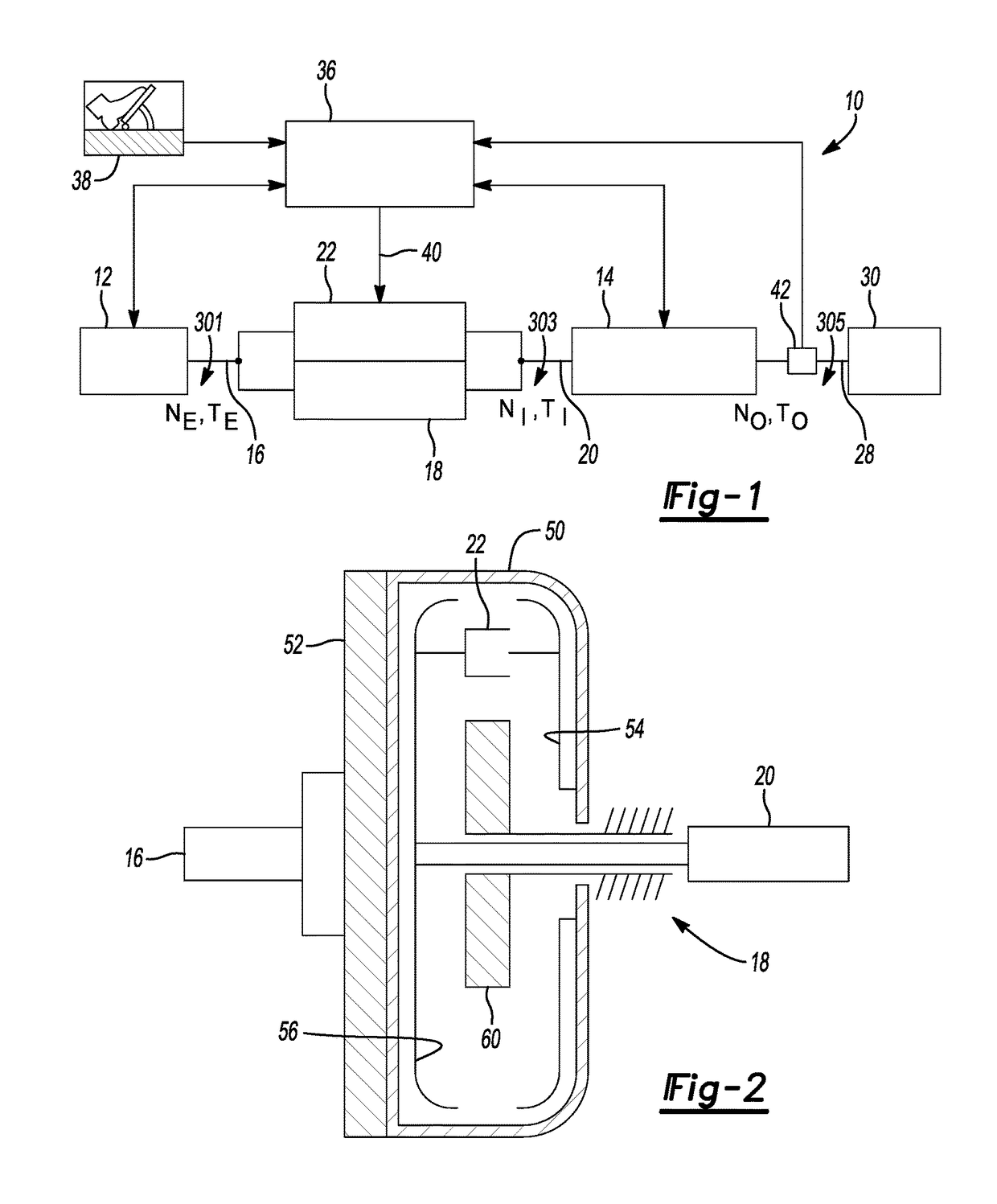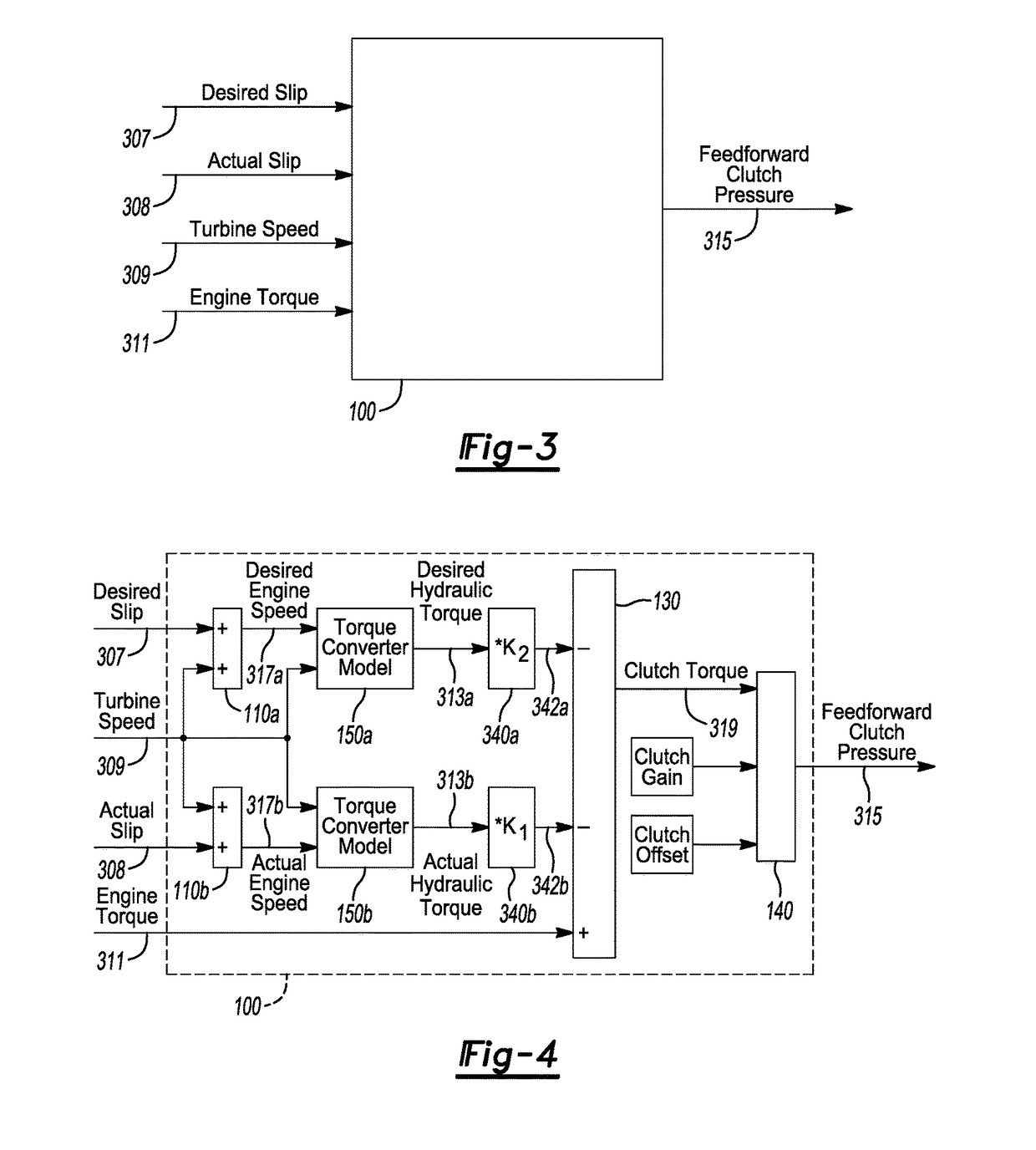Torque converter clutch slip control
a clutch and torque converter technology, applied in the direction of gearing control, gearing elements, gearing, etc., can solve the problems of inability to lock tcc, and inability to reduce the clutch slippag
- Summary
- Abstract
- Description
- Claims
- Application Information
AI Technical Summary
Benefits of technology
Problems solved by technology
Method used
Image
Examples
Embodiment Construction
[0012]Referring now to the drawings, wherein the showings are for the purpose of illustrating certain exemplary embodiments only and not for the purpose of limiting the same, FIG. 1 is a block diagram of various powertrain components of a vehicle 10. The powertrain components include an engine 12 and a transmission 14. An output shaft 16 of the engine 12 is coupled to the input (i.e. impeller or pump) of a torque converter 18, and an input shaft 20 of the transmission 14 is coupled to the output (i.e. turbine) of the torque converter 18. The torque converter 18 transfers rotational energy from the engine 12 to the transmission 14 using hydraulic fluid so that the engine 12 can be mechanically disengaged from the transmission 14 when necessary. A TCC 22, which can be actuated between a fully engaged position, a slip mode where slip occurs, and a fully disengaged position, applies a TCC torque for controlling a torque converter slip in the torque converter 18 between the engine 12 and...
PUM
 Login to View More
Login to View More Abstract
Description
Claims
Application Information
 Login to View More
Login to View More - R&D
- Intellectual Property
- Life Sciences
- Materials
- Tech Scout
- Unparalleled Data Quality
- Higher Quality Content
- 60% Fewer Hallucinations
Browse by: Latest US Patents, China's latest patents, Technical Efficacy Thesaurus, Application Domain, Technology Topic, Popular Technical Reports.
© 2025 PatSnap. All rights reserved.Legal|Privacy policy|Modern Slavery Act Transparency Statement|Sitemap|About US| Contact US: help@patsnap.com



